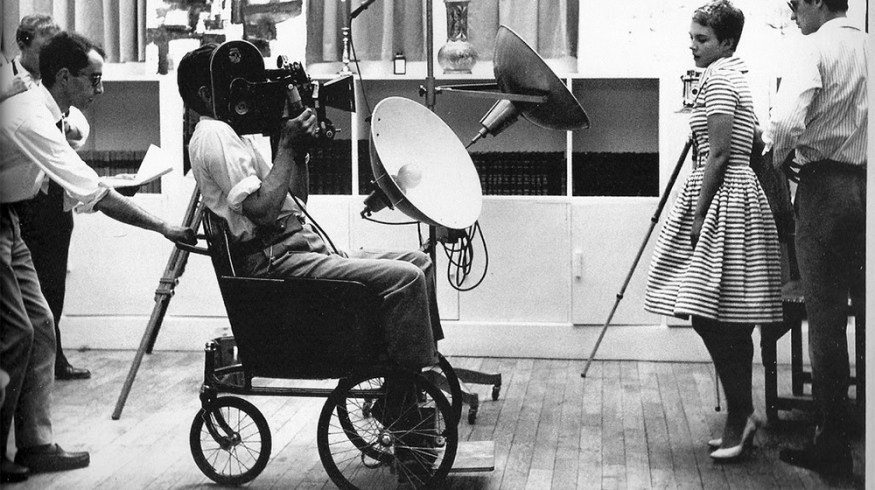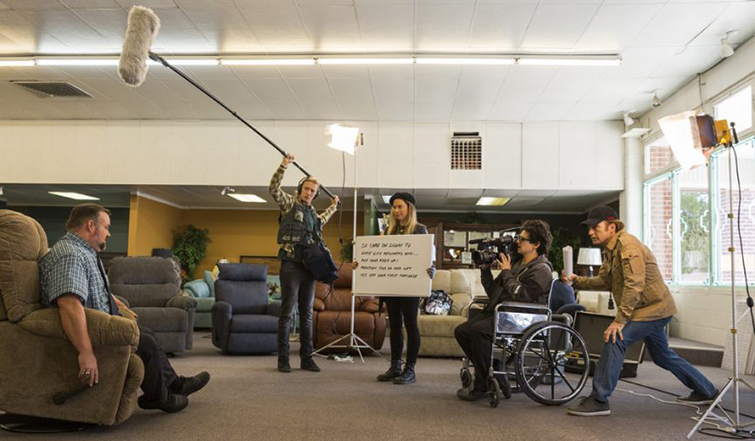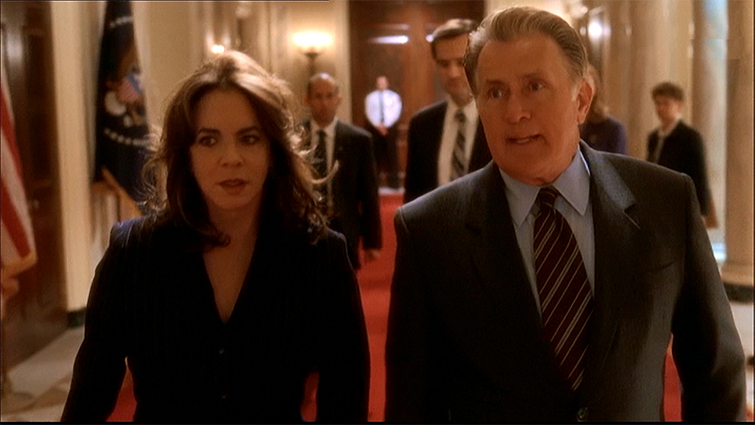
7 DIY Filmmaking Techniques Using the Versatile Wheelchair Dolly
The wheelchair dolly is a tried-and-true DIY tool — for projects of all sizes. Check out these 7 tips on how to use one to improve your film.
Cover Image of Jean-Luc Godard on the set of Breathless (via Studio Canal).
There are plenty of dolly options available for filmmakers at all levels of production. Even for those looking for DIY options can find tons of great resources to put something together on the cheap. However, if you’re looking for one simple solution (which can actually be much more versatile and fun), consider the indie-filmmaker’s favorite — the wheelchair dolly.
While there are some wheelchair-style dollies specifically for filmmaking (all great options), let’s focus on using a standard-issue wheelchair, which you can often find secondhand at thrift stores or online (here’s a link to Ebay). Once you’re all set, here are seven creative ways to put your DIY wheelchair dolly to use.
1. Push or Pull

Image via AMC.
Let’s start with the basics. Using a wheelchair dolly is great for pushing in or pulling out shots. You’ll usually see these types of shots in large-scale productions, as they both see a lot of use for narrative effect (creating important moments) or for clarity of composition. If you keep the movement short and straight, the wheelchair will work very much like your standard track-dolly setup, but without all the assembly and breakdown.
Bonus Tip: if you’re shooting solo or with an extremely small crew, you can always sit yourself in a wheelchair and do some short push or pull movements using only your feet. Try it — even a few inches can add style and depth to what would normally be a regular set shot.
2. Walk and Talks

Image from The West Wing via NBC.
Along with straightforward push and pull shots for dramatic effect, a wheelchair is a great option for long tracking shots like the now-recognizable Aaron Sorkin-style Walk and Talk shot (which you can see parodied here). The wheelchair is great because your camera operator can face your subject or subjects while someone pulls them backward.
3. Tracking Low Angles

Image via Tumblr.
The flexibility a wheelchair offers to the camera operator while sitting is also great. You usually won’t need to lock the camera operator in, and they’ll have almost a full range of motion from the seat. As such, to get many low-angle tracking shots, you don’t need to assemble a tricky low-to-the-the floor dolly setup; you can simply direct your camera op to lean over and hold the camera at a low angle. This may make things a little less steady, but for shorter moves (and with surer-handed ops), it’s a solid technique.
4. Curved Tracking Moves
Another aspect of the wheelchair dolly that makes it unique is the simple fact that it is not bound to a set of tracks. The wheelchair, by its nature, is more mobile and can perform complex and curved maneuvers. Try laying some track to recreate this famous circle move from Jean-Luc Godard’s French New Wave classic Breathless.
5. Extremely Long Tracking Shots

Image via monnomestdavid.
Similar to the Walk and Talk trick, using a wheelchair dolly for extremely long tracking shots is a great way to consolidate resources on DIY productions. The wheelchair can be quite effective, even with only a two-person crew: one to sit and one to move the wheelchair around. If you’re going over long distances, try situating your camera operator in a more relaxed and flexible position (they can also use a Steadicam or some other stabilizer). Be careful, though, with different floor textures (like thick carpet), thresholds between doorways, etc.
6. Dolly Zooms
The wheelchair dolly can also make it easier to perform dolly zooms (which is also known as the Hitchcock zoom or Vertigo Effect). With the camera operator sitting (or kneeling), their hands should be free enough to manually perform a zoom while someone pushes them in the chair at a medium to fast pace. You may have to do several takes, as hitting the focus will always be difficult during such a move, but the effort is worth it in the end.
7. Using Natural Gravity

Image via Film Riot.
Finally, one of the riskier wheelchair dolly tricks is to let things like gravity and inclines take control of your movements. These opportunities might not come up often, but if you ever need to simulate a character POV or follow a movement that rapidly increases in speed while slipping or sliding down, using a wheelchair in a controlled free fall move is a daring option. (Be sure to have plenty of people around to help guide and catch the camera op.)
For more DIY production tips, check out some of these resources.






